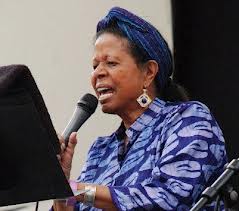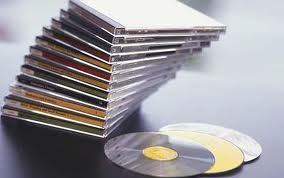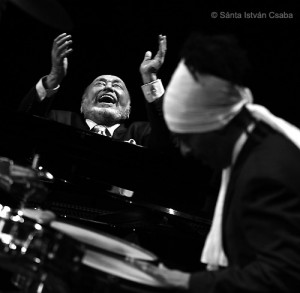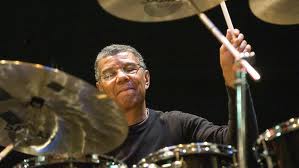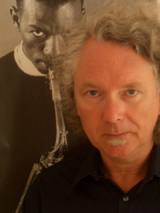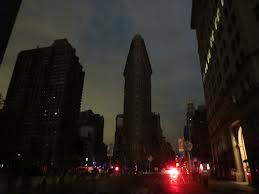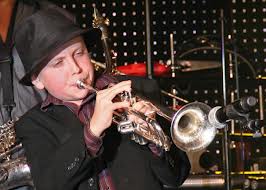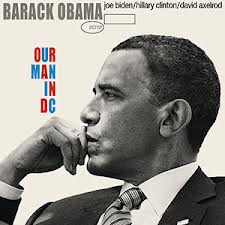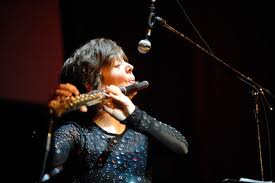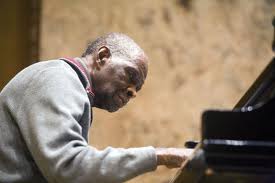Jayne Cortez, a no-nonsense poet who often declaimed her incisive lines of vivid imagery tying fierce social criticism to imperatives of personal responsibility with backing by her band the Firespitters, died Dec. 28 at age 76 (according to NYT obit, age 78). Her deep appreciation of American blues and jazz was another of her constant themes; her […]
Archives for 2012
2012 Top Jazz Beyond Jazz recordings
Checking out new recordings is the motivation of much jazz journalism, though at top-10 time having so much new stuff can be a bedevilment, if not a curse. Here’s a baker’s dozen of my favorites from among the 11-some-hundred sent by record labels, publicists and, increasingly, the artists themselves. They reward multiple listenings, so I keep […]
My suggestion for 2014 NEA Jazz Master: Reggie Workman
Things may be somewhat up-for-grabs at the National Endowment for the Arts, with chair Rocco Landesman  stepping down at year end (NEA Senior Deputy Chairman Joan Shigekawa will serve as the agency’s acting head), but assuming the show will go on I urge Reggie Workman (b. 1937, Philadelphia) receive a 2014 NEA Jazz Masters Award. Workman is […]
“Latin” Jazz Master Eddie Palmieri, both innovator and conservator
Eddie Palmieri is a new NEA Jazz Master — to be inducted Jan. 14 in a ceremony at Dizzy’s Club in Jazz at Lincoln Center, to be webcast live. He is, contradictorily, the spark-plug/conservator of the Americas’ indefatigable Afro-Caribbean music. He turned 76 yesterday (Dec. 15), celebrating with a a “career retrospective” featuring his jazz band and […]
DeJohnette the jazzer of 54 artists getting $50k USA fellowships
Drummer/composer/pianist Jack DeJohnette, an NEA Jazz Master, is the sole jazz-associated artist among 54 fellows selected by United States Artists (not a governmental organization) from 438 applications to a grants program initiated by United States Artists in 2006. USA fellows received $50,000 in unrestricted funds. Citing “cutting-edge thinkers and traditional practitioners from the fields of architecture […]
Found in Heidelberg: Transatlantic jazz connections
The Enjoy Jazz Festival in south-western Germany two weeks ago culminated in an unexpected celebration of jazz’s deep traditions, led by formidable saxophonist Archie Shepp and serene reeds explorer Yusef Lateef. It was a fitting end, also, for an international symposium titled “Lost in Diversity: A Transatlantic Dialogue on the Social Relevance of Jazz,” held at […]
Critics, scholars, musicians @ Enjoy Jazz Fest, Lost in Diversity conference
International jazz journalists, academic scholars, presenters and musicians rarely meet together, but that’s the plan for the “Lost in Diversity” conference during the 14th Enjoy Jazz Fest, which I’m attending tomorrow (Nov 7) through Sunday in Heidelberg, Germany. Curated by ethnomusicologist and sociologist Dr. Christian Broecking of the Heidelberg Center of American Studies in the Ruprecht-Karls-Universität (oldest in Germany, founded 1386), this is […]
NYC jazz this weekend, post-Sandy
A lot of jazz joints are “dives” — in basements — but since Hurricane Sandy it’s not flood waters keeping cellars like the Village Vanguard, the Jazz Standard, Fat Cat, 55 Bar (Sat: open with candlelight), Cornelia Street Café and Smalls closed. There’s simply no electricity. So they, like every other music venue below 26th St. […]
We’ve got rhythm: Masters meet prodigies @ Jazz Foundation Loft Party
NEA Jazz Masters pianist Randy Weston and alto saxophonist Lou Donaldson, both 86, played the same room as two astonishing 12-old prodigies — trumpeter Geoffrey Gallante and organist Matthew Whitaker (see their video clips, below) — at the Jazz Foundation of America‘s annual benefit Loft Party Saturday night  (Oct 27),. It proved again that America’s improvised, vernacular art form appeals to […]
There is nothing like a blog (the freelancer’s recourse)
I’ve been a freelance writer for almost 40 years and it hasn’t gotten easier, but I’m glad to have this blog. Why? is the question to be addressed at the JJA’s webinar “Blogging: Tales from Veterans” by Pamela Espeland (Bebopified), Willard Jenkins (The Independent Ear) and Marc Myers (JazzWax), which I’ll moderate, on Tuesday Oct. […]
Jazzers for Obama in NYC tonight
The Jazz for Obama talent pool fundraising for the re-election of the President at Symphony Space  (2537 Broadway, NYC) tonight is stellar. Roy Haynes, Joe Lovano, Brad Mehldau, Ron Carter, Jimmy Heath, McCoy Tyner, Kenny Barron, Jim Hall, Dee Dee Bridgewater, Ravi Coltrane, Arturo O’Farrill, Kenny Garrett, Geri Allen, Jeff ‘Tain” Watts, Christian McBride, Gretchen Partlato, Claudio […]
MacArthur ignores jazz musicians and improvisers
The new list of MacArthur fellows, just released, features not one musician from the world of jazz among the 23 distinguished Americans who will receive $100,000 a year for five years. Two musicians are named among the fellows: Claire Chase, flutist and founder of the International Contemporary Ensemble (ICE) and Chris Thile, mandolinist of Nickle Creek and […]
Muhal Richard Abrams: Outsiders’ Insider, Insiders’ Outsider
Hear keyboardist-composer Muhal Richard Abrams play solo and leading a drummerless quartet tonight, 9/21/2012, at 8 pm at the Community Church or New York (40 E. 35th, between Madison and Park Ave.). It’s the first concert of the season produced by the AACM (Association for the Advancement of Creative Musicians), the 47-year-old organization which he co-founded […]

